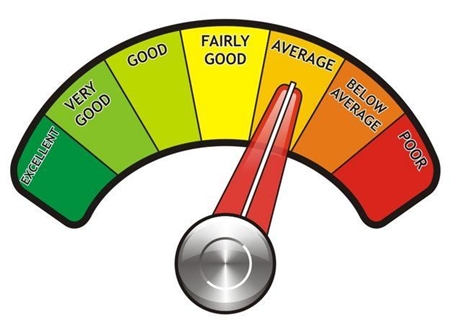Average is mainly defined as the sum of observations divided by the number of observations. Keeping in view the Numerical Aptitude section of 11 plus exams, few questions are always asked from this topic.While teaching students for 11 Plus at Champs Learning, I observed that it is not a difficulty topic if you know the tricks to solve the question in very less time.
Formula:
Average= (Sum of observations) / (Number of observations)
Average Speed:
If a person travels some distance at a speed of x km/hr and the same distance at a speed of y km/hr, then the average speed during the whole journey will be calculated by using the formula
2xy / (x+y)
If a person covers P km at x km/hr and Q km at y km/hr and R km at z km/hr, then the average speed in covering the whole distance is
(P+Q+R) / (P/ x+Q / y+R / z)
Important Points:
- When a person replaces another person then:
o If the average is increased, then
Age of new person= Age of person who left + (Increase in average * total number of persons)
o If the average is decreased, then
Age of new person= Age of person who left - (Decrease in average * total number of persons)
- When a person joins the group:
o In case of an increase in average,
Age of new member= Previous average+ (Increase in average * Number of members including new member)
o In case of decrease in average,
Age of new member= Previous average- (Decrease in average * Number of members including new member)
- In the Arithmetic Progression there are two cases:
o When the number of terms is odd - the average will be the middle term.
o When number of terms is even - the average will be the average of two middle terms.
To understand the concept properly, let's try doing some questions.
Solved Questions
Questions 1: What will be the average of the following set of terms: 23, 25, 27, 29 and 31?
Solution: We know that the average is the middle term when the number of terms is odd, but before that, let's see if it is A.P. or not.
Since, there difference between two consecutive terms, so the average will be taken as the middle term i.e. 27.
Question 2: Find the average of the following terms: 22, 23, 24, 25, 26 and 27.
Solution: We have discussed above that if the number of terms is even, then the average will be the average of the middle two terms.
So, the average here will be (24 + 25)/2 = 49/2 = 24.5
Question 3: The average weight of a class of 24 students is 36 years. When the weight of the teacher is also included, the average weight increases by 1kg. What is the weight of the teacher?
Solution: We know that, in case of increase in average,
Age of new member= Previous average+ (Increase in average X Number of members including new member)
Therefore,
Age of new member = 36 + (1 × 25)
Age of new member = 36 + 25 = 61
Question 4: Find the average of first 30 natural numbers.
Solution: Sum of first n natural numbers = n(n+1)/2
Therefore, Average=(30 (30+1))/(2*30)
= (30*31)/(2*31) = 15.5
Question 5: A merchant has a sale of Rs. 6435, Rs. 6927, Rs. 6855, Rs. 7230 and Rs. 6562 for 5 consecutive months. How much sale must he have in the sixth month so that he gets an average sale of Rs. 6500?
Solution: Total Sale of 5 months = 6435+6927+6855+7230+6562 = 34009
Required Sale = 6500 * 6 = 39000
Sale required in 6th month so that the average comes out to be 6500 = 39000 - 34009 = Rs 4991
Take this test to check your understanding of the topic: Averages.
Question 6: The average age of the teacher and six students is 12 which is reduced by 5 if the age of the teacher is excluded. What is the age of the teacher?
Solution: Total age of six students and teacher = 12 * 7 = 84
New average when teacher is excluded = 7
Therefore, total age of six students = 6 * 7 = 42
Therefore, age of teacher = 84 - 42 = 42
Question 7: 19 persons went to a hotel for a combined dinner party. 13 of them spent Rs 79 each on their dinner and the rest spent Rs 4 more than the average expenditure of all the 19. What was the total approximate money spent by them?
Solution: Assume that "×" is the average expenditure of 19 persons.
Then, 19× = 13 * 79 + 6 (×+4)
13× = 1051
× ≅81 ( approximately, as in the question approximate money is asked )
Therefore, total expenditure = 81 * 19= Rs 1539
Question 8: The average marks of 13 students 40. The average marks of first 7 students are 42 and that of the last seven are 35. Find the marks of the 7th student.
Solution: Total marks of 13 students = 13 * 40 = 520 Marks of first 7 students = 7 * 42 = 294
Marks of last 7 students = 7 * 35 = 245
Marks of 7th student = (294+245) - 520 = 19
Question 9: Aman has a certain average for 9 innings in the tenth innings; he scores 100 runs, thereby increasing his average by 8 runs. His new average is
Solution: Let his total average b "×"
His total runs in 9 innings will be 9×
New total; 9x + 100 = 10 (×+8)
× = 20
Therefore, new average = 20 + 8 = 28
Question 10: The average weight of 5 men is decreased by 3 kg when one of them weighing 150 kg is replaced by another person. This new person is again replaced by another person whose weight is 30 kg lower than the person he replaced. What is the overall change in the average due to the dual change?
Solution: The weight of the second man is 135 kg and that of the third is 105 kg.
Hence, net result is a drop of 45 for 5 people.
Hence, 9 kg is the overall drop.
Question 11: Distance between two stations A and B is 778 km. A train covers the journey from A to B at 84 km/hr and returns back to A with a uniform speed of 56 km/hr. Find the average speed of train during the whole journey?
Solution: Required average speed = 2xy/(x+y)
(2*84*56)/(84+56)= 67.2 km/hr

